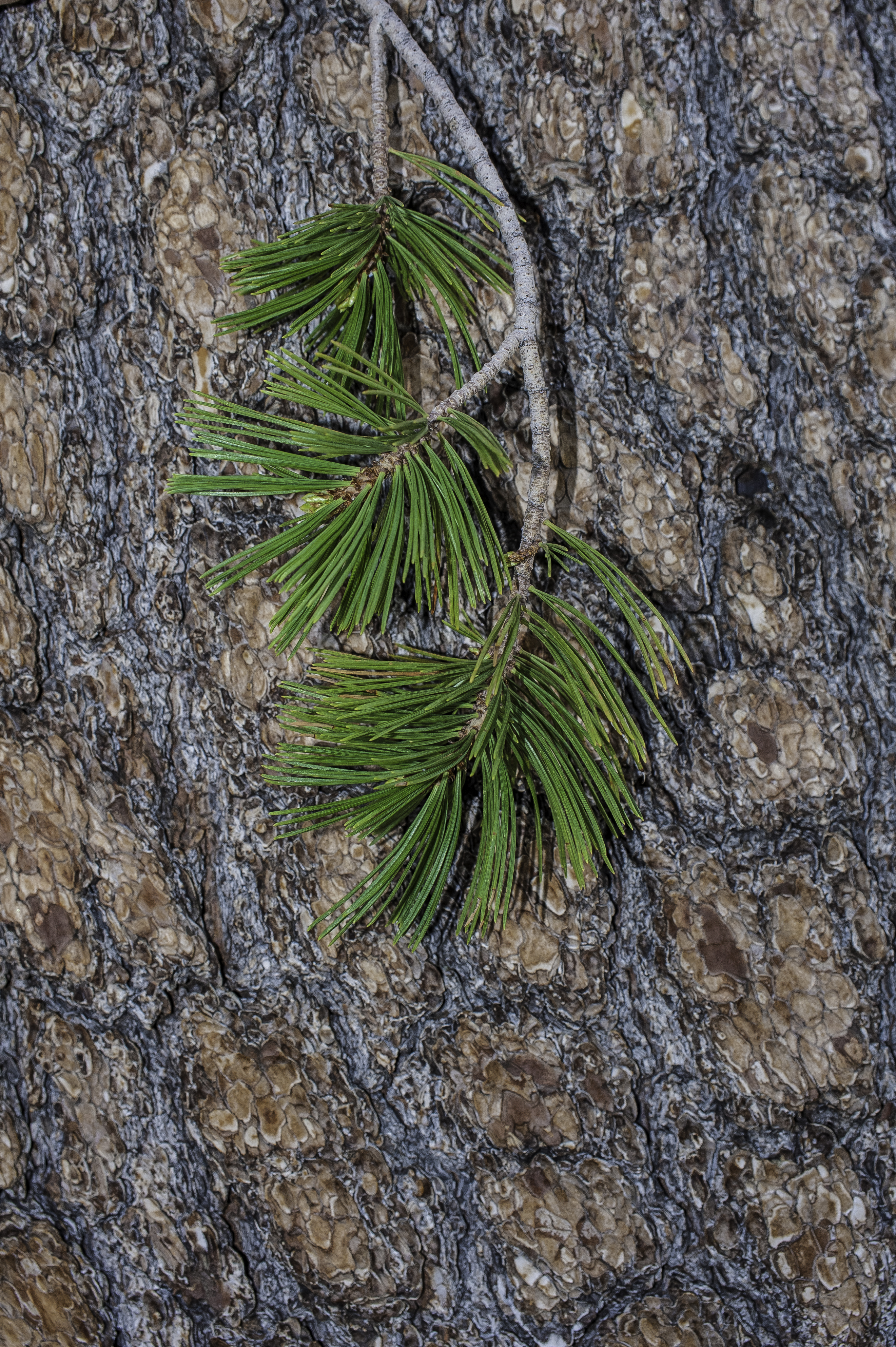Silver pine
(Pinus monticola)

Description
Western white pine (Pinus monticola), also called silver pine and California mountain pine, is a species of pine in the family Pinaceae. It occurs in mountain ranges of northwestern North America. It is the state tree of Idaho and is sometimes known as the Idaho pine. Western white pine is a large tree, regularly growing to 30–50 metres (98–164 ft) and exceptionally up to 70 metres (230 ft) tall. It is a member of the white pine group, Pinus subgenus Strobus, and like all members of that group, the leaves ('needles') are in fascicles (bundles) of five, with a deciduous sheath. The needles are finely serrated, and 5–13 cm (2–5 in) long. The cones, appearing even on young trees, are long and slender, 12–32 cm (4+3⁄4–12+1⁄2 in) long and 3–4 cm (1+1⁄4–1+1⁄2 in) broad (closed), opening to 5–8 cm (2–3+1⁄4 in) broad; the scales are thin and flexible. The seeds are small, 4–7 mm (3⁄16–1⁄4 in) long, and have a long slender wing 15–22 mm (9⁄16–7⁄8 in) long. The branches are borne in regular whorls, produced at the rate of one a year; this is pronounced in narrow, stand-grown trees, while open specimens may have a more rounded form with wide-reaching limbs. When mature, the tree has bark that appears to be cut into small, checkered units. It is related to the Eastern white pine (Pinus strobus), differing from it in having larger cones, slightly longer-lasting leaves (2–3 years, rather than 1.5–2 years) with more prominent stomatal bands, and a somewhat denser and narrower habit. The species occurs in humid areas of the mountains of the Western United States and Western Canada such as the Sierra Nevada, the Cascade Range, the Coast Range, and the northern Rocky Mountains. It can be found in elevations of 600 to 1,800 meters (2,000 to 5,900 ft) above sea level in eastern Washington and Oregon's Blue Mountains and 1,800 to 3,100 metres (5,900 to 10,200 ft) on the western face of the Sierra Nevada as far south as the headwaters of the Kern River. The tree often occurs in forests with fir and hemlock species, especially those which are tolerant of shade. It benefits from disturbances that clear away competing species, including low fires that do not destroy all of its cone-protected seeds. It is also well adapted to poor, rocky soils.
Taxonomic tree:







